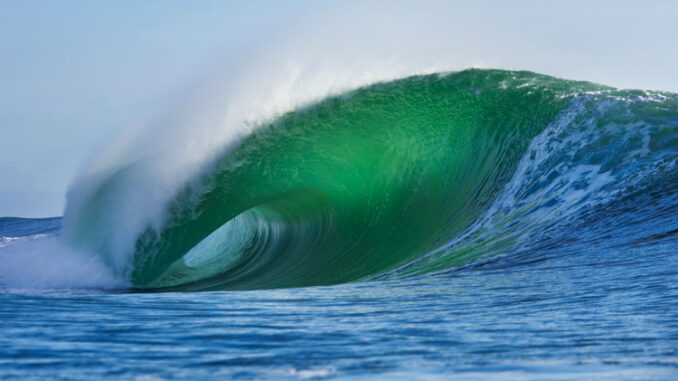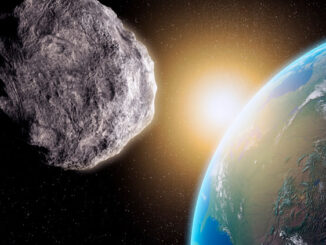
Wind and other forces of nature cause ocean water to be in constant motion. Waves are evidence of this motion. Waves appear on the ocean surface as choppy, rolling movements. Waves can be observed in any body of water, not just the ocean, because waves are created by disturbances in the water.
Wind is the most common cause of waves. As wind passes over water, energy from the wind is transferred to the water. Air pressure above the water forces winds downward onto the water’s surface, displacing the water forming waves. Tidal waves are formed by the gravitational forces of the Earth and the moon. As the moon moves around the Earth, it causes the oceans to swell on either side. The side closest to the moon, and the side farthest away from the moon, generate high tides with large waves. As Earth rotates, tides around the world go in and out. Some waves are caused by geologic disturbances beneath the ocean surface. Tsunamis are waves formed by underwater earthquakes. Tsunamis are powerful waves that displace large amounts of water very quickly. They create large, long waves that can cause damage when they reach land. All waves have a top, called the crest, and a bottom, called the trough. Waves are measured in height, which is the vertical distance between the crest and the trough; wavelength, which is the distance between waves, measured from crest to crest or trough to trough; and period, which is the time required for waves to pass a fixed point. As waves approach land and lose momentum, they break, or curl over. Waves vary in size and shape, and in how they are formed. No two waves are ever the same.
What Do You Think? Some people, like fishermen or surfers, depend on the ocean for their job. Why is it important for people who depend on the ocean to understand waves?
Photo Credit: Andrew Shield/redbrickstock.com/Alamy Stock Photo



